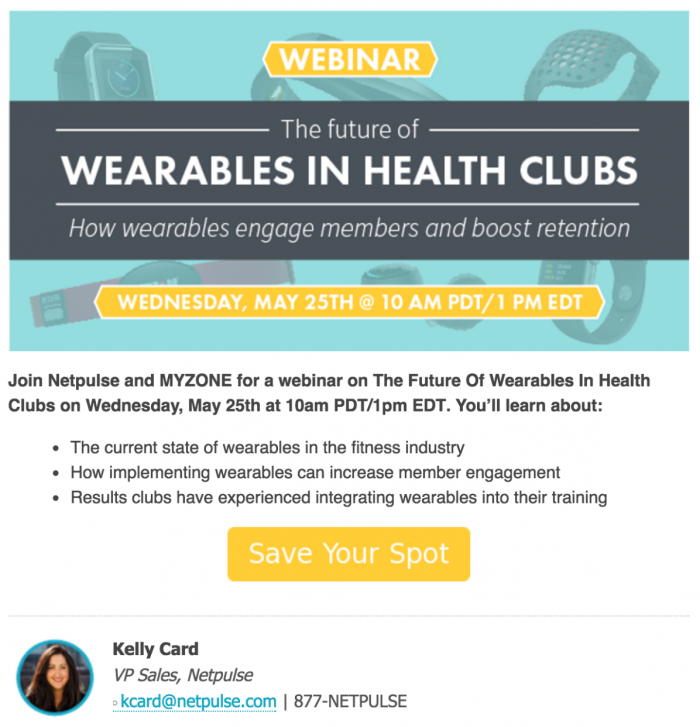This is article #32 out of 50 in The Startup Marketing Playbook.
Despite the explosive growth in digital marketing over the last decade, good old fashioned email continues to be a primary channel for inbound marketing. Once targets provide their contact information to download a piece of valuable content they become a lead. You now have an opportunity to email them additional content each week, continuing to nurture the relationship until that lead “raises their hand” to request a demo, therefore becoming an MQL.
The weekly email campaigns are incredibly important since they are often directly responsible for driving MQLs. To keep you organized, divide your email marketing into two categories:
1. Plain text emails
These emails look as if they were sent personally and have a familiar look that drives responses. They are best utilized in nurture workflows or automatic responses to an action, like downloading a piece of content.
2. HTML emails
When you establish a weekly cadence of content marketing, your goal is to launch a new “offer” (i.e. piece of content like ebook or webinar) once a week. Each week you distribute that content by sending an HTML email to your lead list. These emails have graphics and call to action buttons, but keep the design incredibly simple. In this post, we are going to focus on HTML emails. Let’s dig in:
Design
When my team first launched our marketing campaigns, we experimented with many email formats and ultimately landed on one that looks like this:
Each email is structured the same way with a set of components that vary for each campaign. The design and content change, but each email contains the same elements:
Graphic header
The top header is what catches the lead’s attention and ultimately determines if they are going to continue reading the email. Your design team creates each header from scratch to graphically depict the content offer in the email. It’s important that this header has text that is easy to read, and graphics that grabs attention to catch the eye immediately.
Opening paragraph
The first paragraph of each email is the “tl;dr” (too long, didn’t read) of what the content offer is all about. It plainly states that the lead is invited to watch a webinar or download an ebook.
Bulleted value props
If the lead wants to learn more about the offer, you add details regarding the value they receive (i.e. what they will learn) by taking the content offer. This is done in bullet points so it is easy to quickly digest.
Call to action
Popping out in a contrasting color is the call to action button that links to the content offer’s landing page. The landing page has similar information as the email, with a form to fill in additional contact details and receive a link to download the content.
Signature with photo
Even though this email is automatically sent, it always comes from a person at your company with their name and photo at the bottom. This adds an additional level of personalization that makes leads comfortable to reply to the email and ask questions.
Details
Subject line
There is a vast amount of research out there on how to best structure subject lines to increase open rates. Consider A/B testing multiple subject lines based on length, verb use and tone to see what works for your market. Each target persona will gravitate towards different variations.
Time to send
Similar to subject lines, there are plenty of studies that have measured the best time to send emails. After combing through many articles, my team arrived at Tuesday mornings. We figured that Monday is when everyone is slammed coming back to work. We wanted to leave as much time as possible to take action on the email during the week, therefore Tuesdays were the best choice. Mailchimp compiled some additional insight on this here.
Replies
Each email you send should have a ReplyTo email address. Even if the email is HTML, many leads will hit the reply button to ask a question. You should be ready to answer.
Tools
Marketing automation
Marketing automation systems should be the primary tool used for email marketing. All of your lead lists, email builder and mass sending engine should come from the same system. This is one of the reasons it is so important to have a marketing automation system, even at the early stages of a startup. It connects all of the marketing activities, from email to landing pages to tracking cookies, together into one seamless operation.
Analysis
Each email you send generates a mountain of data to analyze and optimize. Some important details to pay attention to include:
- Opens: how many leads actually opened the email?
- Clicks: how many leads opened and then clicked the CTA button?
- Actions: how many leads downloaded a content offer from the email?
The marketing automation system tracks and displays all of these metrics. To best optimize email, segment your lead list into smaller groups and send them different variations of the email to see which variation performs best (i.e. A/B testing).
Next Steps
This is a very high level overview of how to get started with your first email marketing campaigns at a startup. Email is all about experimentation — the best next steps to take are to write a few email templates with a valuable content offer and send to a small group of leads. Analyze the performance and iterate from there.
